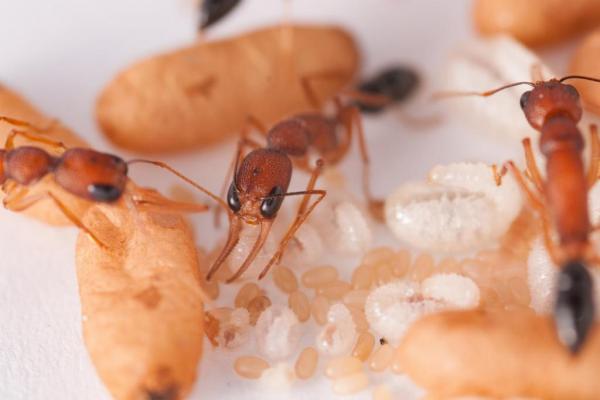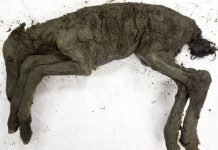
May 4 (UPI) — Researchers have identified the “princess pheromone” that tells a colony of ants when an ant larva will become the queen.
A team from North Carolina State University studied Indian jumping ants, or Harpegnathos saltator, have found the princess pheromone is released to tell ants when a larva is giving signs of maturing into a queen.
“People have been studying pheromones in ants for more than 50 years, and pretty much everything we’ve learned regards how adult ants use pheromones to communicate with each other,” Clint Penick, researcher at North Carolina State, said in a press release. “This is one of the only instances — maybe even the first time — that we’ve found ant larvae producing pheromones that influence colony behavior.”
Colonies of H. saltator rear the newest crop of queens during the first summer rains. The queens leave their colonies to go on a mating flight, mating with winged males and then establishing new colonies of their own.
Researchers found that if ant larva indicate it is becoming a queen at the wrong time of year, like in winter, the timing is off for the mating flight and the larva would be using colony resources for no reason. When this happens, other ants chew on the larva inducing stress to make the larva develop into a worker instead of a queen.
Based on observations, researchers were able to determine that some type of non-visual cue was being passed from H. saltator larvae to workers based on how workers interacted with identical larvae.
“Workers may also prevent queen development if more queens are developing than the colony can support,” Penick said. “By the same token, the princess pheromone, when released at the right time, ensures that workers facilitate the development of the next generation of queens.”
Researchers examined the wax layer found on the cuticle of larvae and took samples of the wax layer on large larvae that were obviously about to become queens along with smaller larvae that were likely to be workers, and found clearly distinct chemical compositions of the different wax layers.
They then transferred the wax layer from the queen larvae to the cuticle of the worker larvae and found that the worker ants responded to the small worker larvae as if it were developing into a queen.
“Signals like the princess pheromone are essential to social insects,” Penick said. “Ants have to have a way to ensure that there are enough workers in the colony, otherwise all larvae could develop as queens and the insect ‘society’ would break down. Instead of ants, you would have something more like a colony of wasps.”
The study was published in Animal Behavior.





